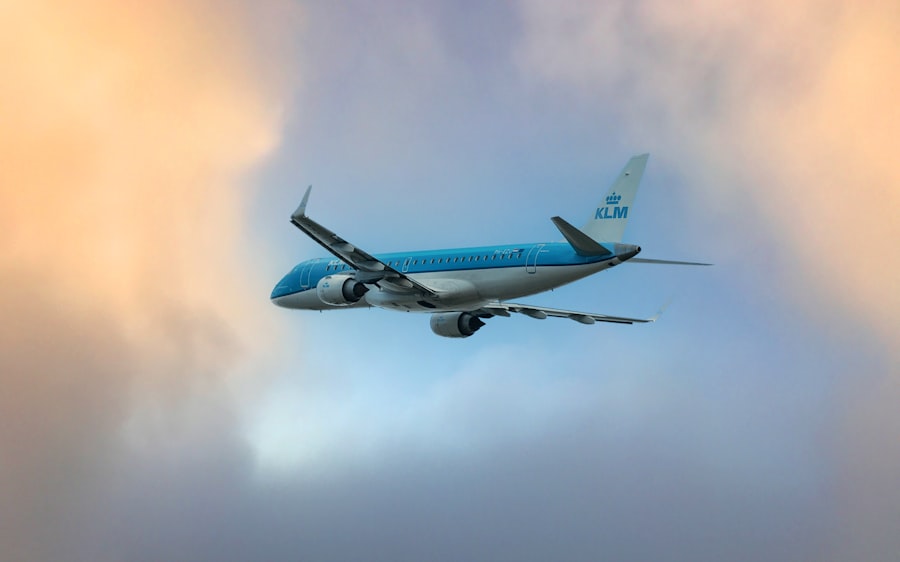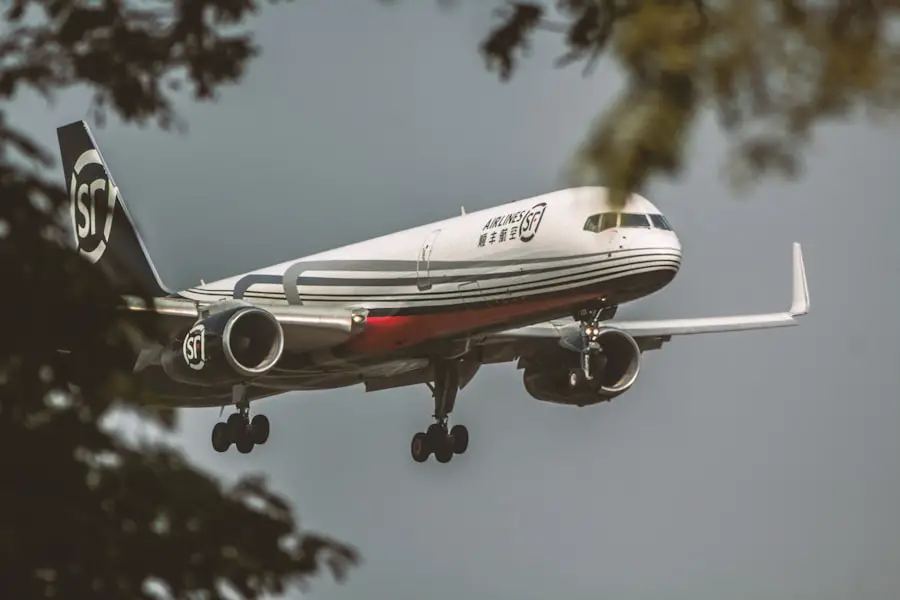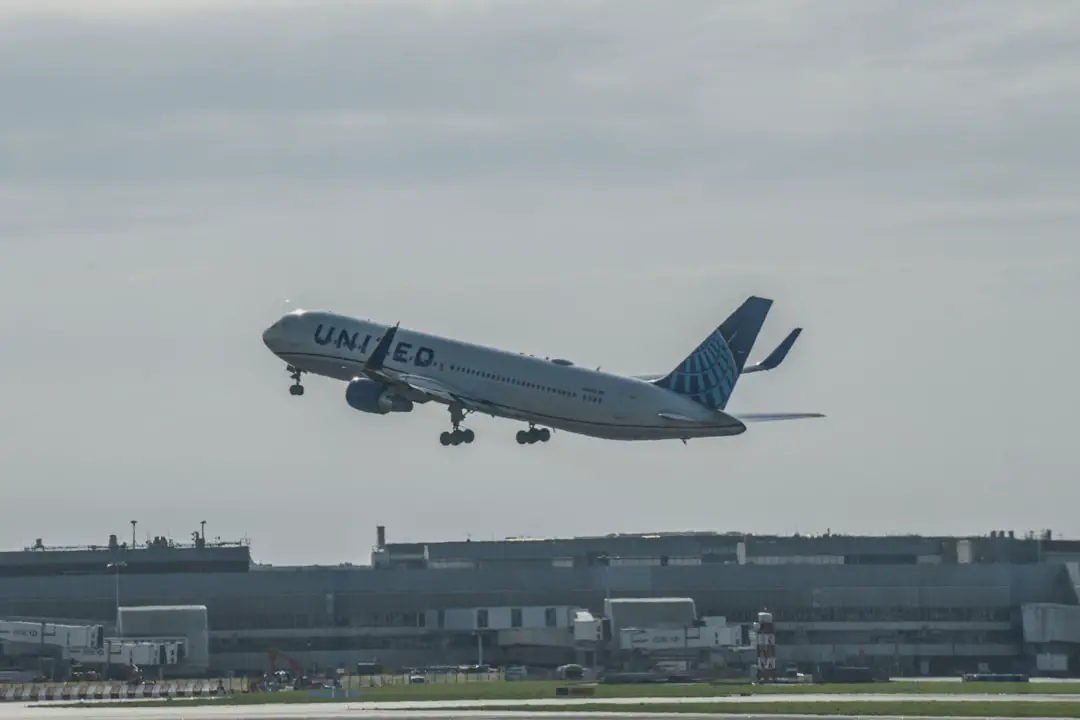American Airlines, one of the largest carriers in the world, has been exploring options to modernize its fleet and enhance operational efficiency. Among the aircraft under consideration is the Boeing 777-9, a state-of-the-art long-haul jet that promises to revolutionize air travel with its advanced technology and fuel efficiency. The potential acquisition of the 777-9 aligns with American Airlines’ strategic goals of improving passenger experience while maintaining competitive operational costs.
As the airline industry continues to recover from the impacts of the COVID-19 pandemic, the decision to invest in new aircraft is critical for positioning American Airlines for future growth. The Boeing 777-9, part of Boeing’s 777X family, represents a significant leap in aviation technology. With its larger wingspan, advanced engines, and innovative materials, the 777-9 is designed to offer airlines improved performance metrics, including reduced fuel consumption and lower emissions.
For American Airlines, integrating this aircraft into its fleet could not only enhance its operational capabilities but also signal a commitment to sustainability and customer satisfaction. As the airline weighs its options, understanding the intricacies of the 777-9 and its fit within American Airlines’ existing operations will be paramount.
Key Takeaways
- American Airlines is considering purchasing the Boeing 777-9 jet to update its fleet and improve its services.
- The Boeing 777-9 is a long-range, wide-body aircraft with advanced features and capabilities.
- American Airlines currently operates a diverse fleet of aircraft, including Boeing 777-200 and 787 Dreamliner.
- The 777-9 offers increased capacity, improved fuel efficiency, and enhanced passenger comfort for American Airlines.
- Introducing the 777-9 to American Airlines’ fleet may pose challenges such as training, maintenance, and operational adjustments.
Overview of the Boeing 777-9 Jet
The Boeing 777-9 is a marvel of modern engineering, boasting a range of features that set it apart from its predecessors and competitors. With a maximum seating capacity of approximately 426 passengers in a two-class configuration, the 777-9 is designed to accommodate high-demand routes efficiently. Its wingspan, which extends to an impressive 235 feet when fully extended, incorporates advanced wing folding technology that allows it to operate at airports with limited space while maximizing aerodynamic efficiency.
This design not only enhances fuel efficiency but also contributes to a quieter flight experience. Equipped with the latest generation of GE9X engines, the Boeing 777-9 offers significant improvements in fuel efficiency compared to older models. These engines are designed to reduce fuel consumption by up to 10% compared to the previous generation of engines used in long-haul aircraft.
Additionally, the 777-9 features advanced aerodynamics and lightweight composite materials that further enhance its performance. The aircraft’s range exceeds 7,500 nautical miles, making it suitable for transcontinental and intercontinental flights. This combination of capacity, efficiency, and range positions the Boeing 777-9 as a compelling option for airlines looking to optimize their long-haul operations.
American Airlines’ Current Fleet

American Airlines operates a diverse fleet that includes a mix of narrow-body and wide-body aircraft tailored for various routes and passenger demands. As of late 2023, the airline’s fleet comprises over 850 aircraft, including models from Boeing and Airbus. The wide-body segment includes aircraft such as the Boeing 777-200ER and Boeing 787 Dreamliner, which serve international routes and long-haul domestic flights.
However, many of these aircraft are aging and may require replacement or significant upgrades to meet modern operational standards. The current fleet composition reflects American Airlines’ strategy to balance capacity with operational efficiency. While the existing wide-body aircraft have served the airline well, there is an increasing need for newer models that offer enhanced fuel efficiency and passenger comfort.
The introduction of the Boeing 777-9 could complement American Airlines’ existing fleet by providing a more modern alternative for long-haul operations. This transition would not only improve operational metrics but also align with evolving passenger expectations for comfort and amenities during air travel.
Benefits of the 777-9 for American Airlines
| Benefits | Metrics |
|---|---|
| Increased capacity | 407 seats compared to 304 in the 777-200 |
| Fuel efficiency | 12% lower fuel consumption per seat |
| Extended range | 7,285 nautical miles |
| Enhanced passenger comfort | Wider cabin, larger windows, and improved cabin pressure |
Integrating the Boeing 777-9 into American Airlines’ fleet could yield numerous benefits that extend beyond mere operational efficiency. One of the most significant advantages is the aircraft’s fuel efficiency, which can lead to substantial cost savings over time. With rising fuel prices and increasing pressure to maintain profitability, adopting a more efficient aircraft like the 777-9 can help American Airlines mitigate operational costs while enhancing its competitive edge in the market.
Moreover, the Boeing 777-9 is designed with passenger comfort in mind. The spacious cabin layout allows for wider seats and larger windows, contributing to an overall improved travel experience. Enhanced cabin pressure and humidity levels can also reduce passenger fatigue on long-haul flights, making journeys more enjoyable.
By offering a superior in-flight experience, American Airlines can attract more customers and potentially increase revenue through premium seating options and ancillary services.
Potential Challenges of Introducing the 777-9 to American Airlines’ Fleet
While the benefits of acquiring the Boeing 777-9 are compelling, American Airlines may face several challenges in integrating this aircraft into its existing operations. One significant hurdle is the financial investment required for such a purchase. The list price for a Boeing 777-9 can exceed $400 million per unit, although airlines often negotiate discounts based on bulk orders or long-term partnerships with manufacturers.
Securing financing for such an investment while maintaining profitability can be a delicate balancing act for American Airlines. Additionally, operational challenges may arise during the transition period as pilots and crew members undergo training to operate the new aircraft effectively. The introduction of new technology often necessitates extensive training programs to ensure safety and efficiency in operations.
Furthermore, adapting maintenance procedures and supply chain logistics to accommodate a new aircraft type can pose additional complexities. American Airlines will need to carefully plan this transition to minimize disruptions while maximizing the benefits of introducing the 777-9.
Comparison with Competing Aircraft

In evaluating the potential acquisition of the Boeing 777-9, it is essential to consider how it stacks up against competing aircraft in the long-haul market. The Airbus A350-1000 is one of its primary competitors, offering similar capacity and range capabilities. The A350 features advanced aerodynamics and composite materials that contribute to fuel efficiency and passenger comfort.
However, while both aircraft are designed for long-haul operations, they differ in terms of cabin layout and overall passenger experience. Another competitor is the Boeing 787 Dreamliner series, which has gained popularity among airlines for its fuel efficiency and innovative design features. The Dreamliner offers a slightly smaller capacity than the 777-9 but excels in terms of range and operational flexibility.
Potential Impact on American Airlines’ Routes and Services
The introduction of the Boeing 777-9 could significantly impact American Airlines’ route network and service offerings. With its extended range capabilities, this aircraft could enable American Airlines to explore new international markets that were previously unfeasible due to distance or capacity constraints. For instance, routes connecting major U.S.
cities with emerging markets in Asia or Africa could become viable options, allowing American Airlines to tap into new revenue streams. Moreover, enhancing existing routes with more efficient aircraft can lead to improved frequency and capacity on popular international routes. By deploying the 777-9 on high-demand flights, American Airlines can better meet passenger needs while optimizing load factors.
This strategic deployment could also enhance brand loyalty as travelers seek airlines that offer reliable service on their preferred routes.
Financial Considerations for American Airlines
The financial implications of acquiring the Boeing 777-9 are multifaceted and require careful analysis by American Airlines’ leadership team. Beyond the initial purchase price, ongoing operational costs such as maintenance, crew training, and fuel consumption must be factored into any financial projections. While the fuel efficiency of the 777-9 promises cost savings over time, fluctuations in fuel prices can impact overall profitability.
Additionally, American Airlines must consider potential revenue generation from increased passenger capacity on high-demand routes. The ability to offer more seats on popular international flights could lead to higher ticket sales and ancillary revenue from services such as premium seating options or in-flight purchases. However, these projections must be balanced against market competition and economic conditions that could influence travel demand.
Environmental and Sustainability Implications
As airlines face increasing scrutiny regarding their environmental impact, integrating more fuel-efficient aircraft like the Boeing 777-9 aligns with broader sustainability goals within the aviation industry. The advanced technology incorporated into the 777-9 not only reduces fuel consumption but also lowers greenhouse gas emissions compared to older models. This shift towards more sustainable aviation practices is essential as airlines strive to meet regulatory requirements and public expectations regarding environmental responsibility.
American Airlines has made commitments to reduce its carbon footprint significantly by investing in newer technologies and sustainable aviation fuels (SAFs). The introduction of the Boeing 777-9 could play a pivotal role in achieving these sustainability targets by providing a more efficient platform for long-haul operations. By prioritizing environmentally friendly practices, American Airlines can enhance its brand reputation while contributing positively to global efforts aimed at combating climate change.
Customer Experience and Comfort
In an era where customer experience is paramount in differentiating airlines from one another, the Boeing 777-9 offers features that can significantly enhance passenger comfort during long-haul flights. The spacious cabin design allows for wider seats and improved legroom, catering to travelers seeking comfort on extended journeys. Additionally, larger windows provide natural light and stunning views during flights, contributing to an overall pleasant atmosphere onboard.
The cabin environment is further enhanced by advanced air filtration systems that improve air quality while reducing noise levels during flight.
As airlines compete for market share in an increasingly crowded landscape, prioritizing customer comfort through modern aircraft like the Boeing 777-9 becomes essential for attracting discerning travelers.
Conclusion and Future Outlook
As American Airlines contemplates the potential acquisition of the Boeing 777-9, it stands at a crossroads that could shape its future trajectory within the competitive airline industry. The decision involves weighing numerous factors including financial implications, operational challenges, environmental considerations, and customer experience enhancements. The integration of this advanced aircraft could position American Airlines favorably in an evolving market landscape while addressing pressing sustainability concerns.
Looking ahead, as air travel continues to rebound post-pandemic, airlines that invest wisely in their fleets will likely emerge as leaders in their respective markets. The Boeing 777-9 represents not just an opportunity for operational improvement but also a chance for American Airlines to redefine its commitment to customer satisfaction and environmental stewardship in an increasingly competitive industry landscape.
American Airlines is considering purchasing the 777-9 jet to add to their fleet, a move that could potentially revolutionize their long-haul flights. This decision comes as part of the airline’s efforts to modernize their aircraft and improve passenger experience. For more information on travel gear and accessories, check out this article on the best solar charger for backpacking.
FAQs
What is the Boeing 777-9 jet?
The Boeing 777-9 is a wide-body, twin-engine jet airliner currently under development by Boeing Commercial Airplanes. It is the largest and most efficient twin-engine jet in the world.
What is American Airlines?
American Airlines is a major American airline headquartered in Fort Worth, Texas. It is the largest airline in the world when measured by fleet size, scheduled passengers carried, and revenue passenger mile.
Is American Airlines planning to buy the Boeing 777-9 jet?
As of the time of writing, there has been no official announcement from American Airlines regarding the purchase of the Boeing 777-9 jet. Airlines often evaluate and update their fleet plans, so it is possible that American Airlines may consider the 777-9 in the future.
Why would American Airlines consider buying the Boeing 777-9 jet?
The Boeing 777-9 offers improved fuel efficiency, longer range, and increased passenger capacity compared to previous models. These features could make it an attractive option for American Airlines to expand its long-haul fleet and improve its operational efficiency.
